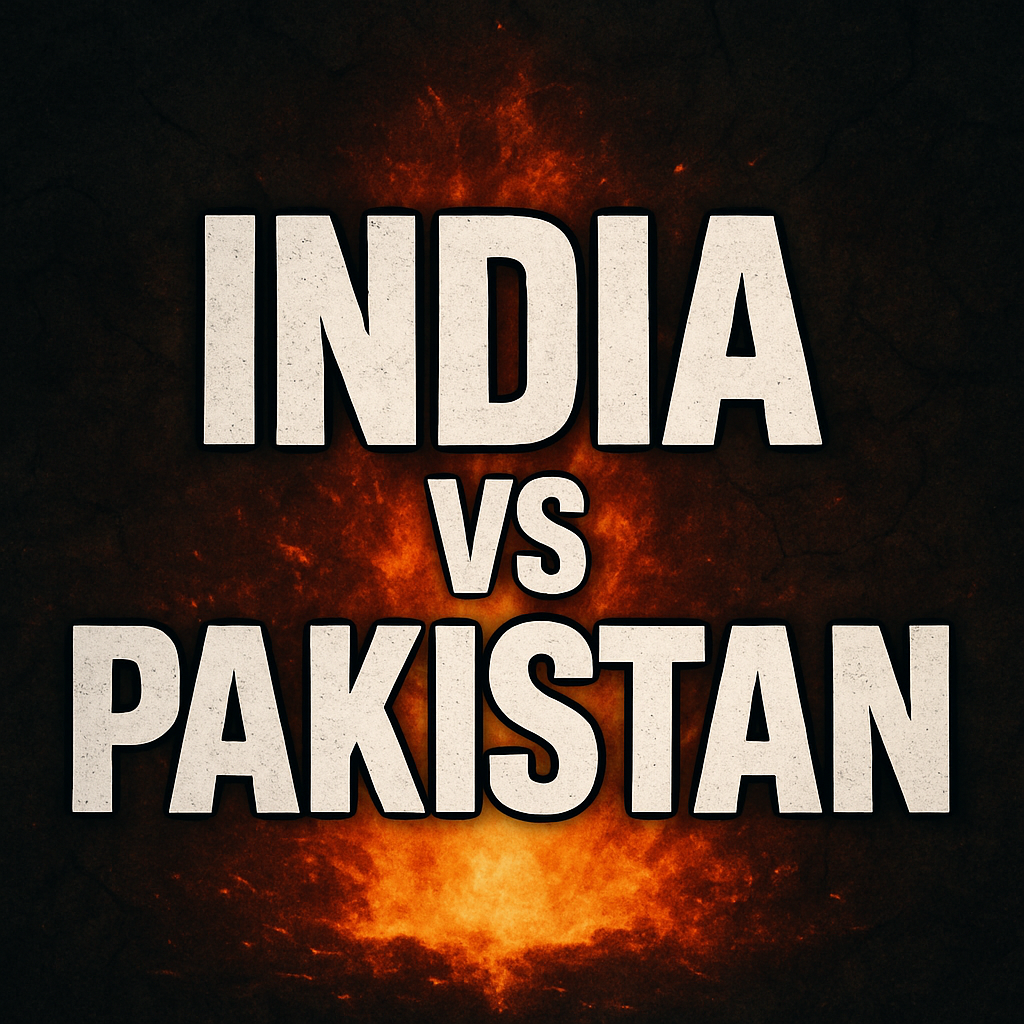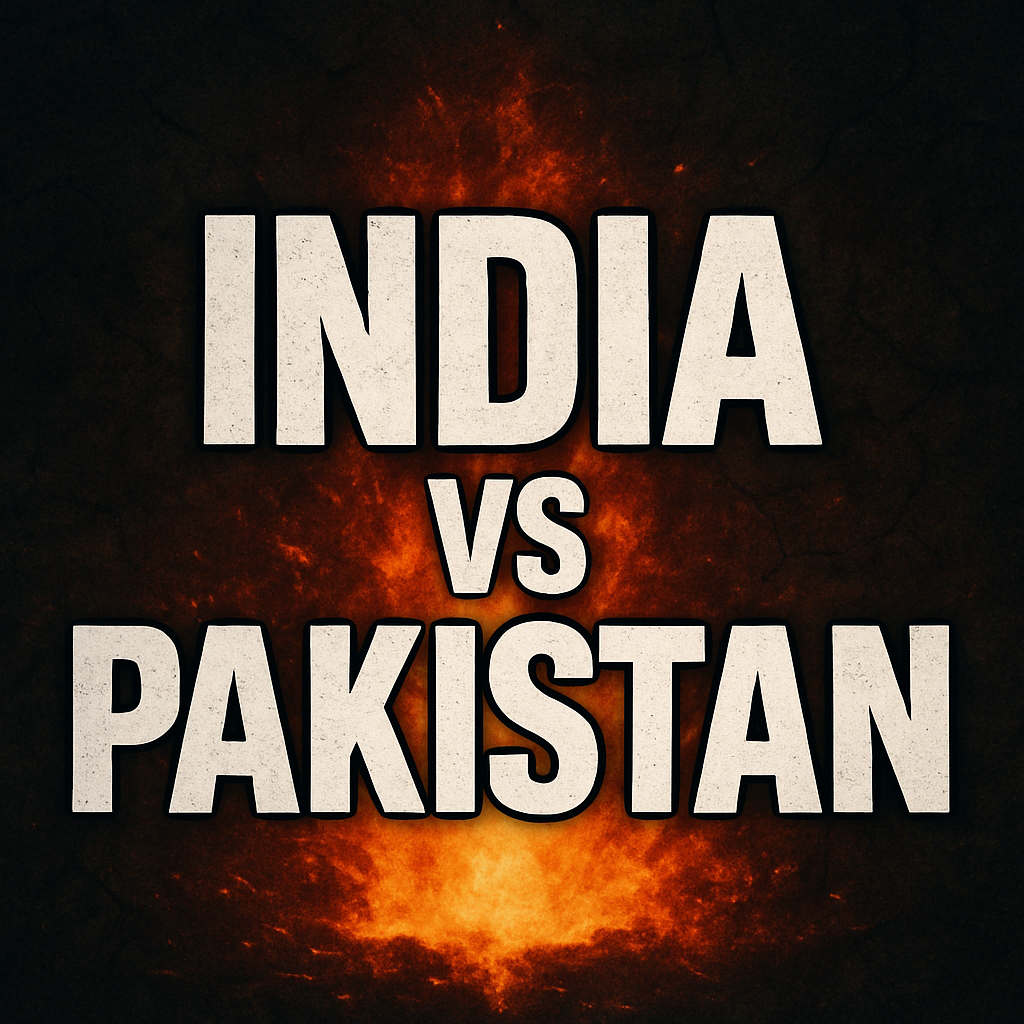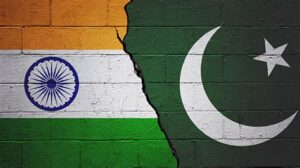
India vs Pakistan
May 7, 2025 – The volatile relationship between India and Pakistan has reached a critical juncture following India’s military operation, dubbed “Operation Sindoor,” which targeted terrorist infrastructure in Pakistan and Pakistan-administered Kashmir (PoK) on May 7, 2025. The strikes, a response to a deadly terrorist attack in Indian-administered Kashmir last month, have plunged the nuclear-armed neighbors into their worst confrontation in decades, raising global concerns about the potential for a broader conflict. As cross-border shelling intensifies and diplomatic ties fray, the world watches anxiously, urging restraint while the region teeters on the edge of escalation.

The Spark: Pahalgam Terror Attack
The latest chapter in the India-Pakistan saga began on April 22, 2025, when a brutal terrorist attack in the Baisaran Valley of Pahalgam, Jammu and Kashmir, claimed the lives of 26 civilians, including 25 Indian nationals and one Nepali citizen. The attack, attributed to Pakistan-based militant groups Lashkar-e-Taiba (LeT) and Jaish-e-Mohammed (JeM), saw terrorists target tourists, with reports of victims being shot in front of their families. The incident sent shockwaves across India, fueling public outrage and intensifying demands for a decisive response.
Indian authorities, led by Prime Minister Narendra Modi, swiftly pointed to Islamabad’s alleged complicity, with Foreign Secretary Vikram Misri stating that investigations established clear links between the attackers and Pakistan. The emotional toll was palpable, with families of the victims, such as Ashanya Dwivedi and Sangita Ganbote, widows of those killed, publicly thanking the government for its retaliatory actions. The operation’s name, “Sindoor” – referring to the vermilion powder worn by married Hindu women, symbolizing love and devotion – was chosen to honor the women widowed in the attack, adding a deeply symbolic layer to India’s response.
Operation Sindoor: A Bold Strike
In the early hours of May 7, 2025, India launched “Operation Sindoor,” a coordinated military operation involving 24 precision missile strikes on nine terrorist sites across Pakistan and PoK, including locations in Muridke, Bahawalpur, and near Muzaffarabad. The Indian Armed Forces, emphasizing the operation’s “focused, measured, and non-escalatory” nature, targeted infrastructure linked to LeT, JeM, and Hizbul Mujahideen, ensuring no Pakistani military facilities were hit. The strikes, executed without Indian forces crossing into Pakistani airspace, were hailed by Indian officials as a successful dismantling of terror networks responsible for cross-border attacks.
Defence Minister Rajnath Singh praised Prime Minister Modi’s leadership, while the Indian Army’s Northern Command confirmed the destruction of all targeted sites. The operation was briefed to the United Nations Security Council (UNSC), with India asserting that the strikes were a direct response to the Pahalgam attack and not an act of aggression. However, the operation has not been without consequences, as Pakistan reported 26 deaths, including civilians, and 46 injuries, with a mosque in Muzaffarabad among the damaged structures.
Pakistan’s Response: Retaliation and Rhetoric
Pakistan’s reaction was swift and unequivocal, labeling India’s strikes a “blatant act of war” and a violation of its sovereignty. Prime Minister Shehbaz Sharif authorized the armed forces to undertake “corresponding action,” vowing retaliation for what Islamabad called an attack on civilian targets. Pakistan claimed to have shot down five Indian Air Force jets, though India has not confirmed these losses. The Pakistani military escalated ceasefire violations along the Line of Control (LoC) in Rajouri and Poonch districts, with heavy artillery fire resulting in the deaths of nine civilians and injuries to 38 others in Jammu and Kashmir.
In a tit-for-tat escalation, Pakistan suspended bilateral agreements, including the Simla Agreement, and rejected India’s suspension of the Indus Waters Treaty, warning that any diversion of water would be treated as an act of war. Both nations closed their airspace, disrupting commercial flights, and halted trade, even via third countries. Social media posts on X reflect heightened tensions, with reports of Pakistani troop movements along the border and Indian citizens being urged to leave Pakistan immediately.
Historical Context: A Decades-Long Rivalry
The roots of this conflict trace back to 1947, when the partition of British India created India and Pakistan, with the disputed region of Jammu and Kashmir becoming a perennial flashpoint. The two nations have fought three major wars (1947, 1965, and 1971) and the 1999 Kargil conflict, alongside numerous skirmishes. Previous escalations, such as the 2019 Pulwama attack and India’s subsequent Balakot airstrikes, set a precedent for India’s cross-border responses to terrorism. However, Operation Sindoor marks a significant escalation, being the deepest incursion into Pakistani territory since the 1971 war.
The Kashmir dispute remains the core of the rivalry, with both nations claiming the region in full while controlling parts of it. The presence of nuclear arsenals on both sides adds a chilling dimension, as analysts warn that any miscalculation could have catastrophic consequences. South Asia expert Michael Kugelman described the strikes as among the “highest-intensity” in recent years, noting that Pakistan’s response is likely to be significant, given the domestic pressure on its leadership to act decisively.
Global Reactions: Calls for Restraint
The international community has responded with alarm, urging both nations to de-escalate. U.S. President Donald Trump called the situation “a shame” and expressed hope for a quick resolution, while Secretary of State Marco Rubio engaged with officials from both sides. China, a close ally of Pakistan, called for calm and restraint, while Russia expressed concern and Turkey urged “common sense.” The United Kingdom offered to mediate, and Qatar emphasized resolving the crisis through diplomatic means. Israel condemned the initial terrorist attack but voiced concerns about further escalation.
Despite these calls, the situation remains fluid. Pakistan’s partial reopening of airports on May 7 suggests a possible window for de-escalation, but ongoing LoC violations and inflammatory rhetoric from both sides keep tensions high. The UNSC has been briefed, but no concrete steps toward mediation have emerged, leaving the onus on New Delhi and Islamabad to prevent a slide into full-scale conflict.
The Current Situation: On the Brink?
As of May 7, 2025, the India-Pakistan border is a tinderbox. Daily exchanges of fire along the LoC continue, with civilian casualties mounting. In India, Prime Minister Modi has canceled a planned European tour to focus on the crisis, and an all-party meeting is scheduled for May 8 to discuss the situation. Jammu and Kashmir Chief Minister Omar Abdullah held an emergency meeting to assess the impact of cross-border shelling, while Telangana’s Chief Minister called for a security review.
Public sentiment, as reflected on platforms like X, is polarized. In India, there is strong support for Operation Sindoor, with many viewing it as a necessary response to terrorism. In Pakistan, anger over the strikes and civilian casualties fuels demands for retaliation. Both nations face domestic pressures that could push leaders toward further escalation, yet historical patterns suggest a preference for limited, targeted exchanges over all-out war.
What’s Next? Engage with Us
The India-Pakistan conflict is at a crossroads. Will Operation Sindoor mark the end of a retaliatory cycle, or is it the prelude to a larger confrontation? The answer hinges on the next moves by both nations, particularly Pakistan’s promised retaliation and India’s response to any counterstrikes. For now, the region remains on edge, with the specter of nuclear capabilities looming large.
We want to hear from you! What’s the mood where you are? Are you optimistic about de-escalation, or do you fear the worst? Share your thoughts, local updates, or insights in the comments below or on our social media channels using #IndiaPakistanTensions. Stay tuned for live updates as this story unfolds.
Sources: Reuters, The Guardian, NDTV, Times Now, Al Jazeera, The Hindu, and posts on X.





